A Portable Infrared System for Identification of Particulate Matter
Abstract
:1. Introduction
2. Materials and Methods
2.1. Materials and Hardware
2.2. Prototype Design
2.2.1. Optic Assembly
2.2.2. Gas Flow
2.2.3. Cyclone Design and Optimization
- A cyclone diameter of 8 mm with h, H, Z, and S scaled accordingly
- ○
- Variations in insertion length, S, with this 8 mm cyclone;
- A cyclone diameter of 5 mm with h, H, Z, and S scaled accordingly
- ○
- Variations in insertion length, S, with this 5 mm cyclone.
2.2.4. Data Processing
3. Results
3.1. Particle Identification
- Four pure materials that were assumed to contain almost only a single material;
- Four mixtures that were prepared from these four raw materials.
3.1.1. Lab Evaluation
Mixture Characterization for Calibration
- Mix 1—SiO2 amorphous/SiO2 crystalline (1:3);
- Mix 2—SiO2 amorphous/SiO2 crystalline/CaCO3/CaSO4 (1:1:1:1);
- Mix 3—SiO2 amorphous/SiO2 crystalline/CaCO3/CaSO4 (3:2:1:4);
- Mix 4—SiO2 amorphous/SiO2 crystalline (1:1);
- Crystalline silica;
- Amorphous silica;
- Calcium carbonate;
- Calcium sulfate.
Detection Limit of Crystalline Silica
3.1.2. Field Evaluation—Qualitative and Quantitative Assessments
4. Discussion and Conclusions
4.1. Cyclone Modifications
- Lower surface roughness;
- No static charging of particles that touch the walls;
- More robust when assembling and using the device.
4.2. Prototype Performance
- The optic assembly was designed to focus IR light from the ARCoptix spectrometer into a hollow waveguide using fixed mirrors. This approach increases the amount of IR light (both intensity and wavelength range) that is available to interact with particles.
- The cyclone geometry and material composition significantly improve the PM collection efficiency.
4.3. Future Outlook
5. Patents
Supplementary Materials
Author Contributions
Funding
Institutional Review Board Statement
Informed Consent Statement
Data Availability Statement
Acknowledgments
Conflicts of Interest
References
- Doney, B.C.; Miller, W.E.; Hale, J.M.; Syamlal, G. Estimation of the number of workers exposed to respirable crystalline silica by industry: Analysis of OSHA compliance data (1979–2015). Am. J. Ind. Med. 2020, 63, 465–477. [Google Scholar] [CrossRef] [PubMed]
- Misra, S.; Sussell, A.L.; Wilson, S.E.; Poplin, G.S. Occupational exposure to respirable crystalline silica among US metal and nonmetal miners, 2000–2019. Am. J. Ind. Med. 2023, 66, 199–212. [Google Scholar] [CrossRef] [PubMed]
- Moore, M. Crystalline Silica: Occurrence and Use. Indoor Built Environ. 1999, 8, 82–88. [Google Scholar] [CrossRef]
- Kauppinen, T. Occupational exposure to carcinogens in the European Union. Occup. Environ. Med. 2000, 57, 10–18. [Google Scholar] [CrossRef]
- OSHA Fact Sheet. OSHA’s Respirable Crystalline Silica Standard for Construction; OSHA: Washington, DC, USA, 2017.
- Koehler, K.A.; Peters, T.M. New Methods for Personal Exposure Monitoring for Airborne Particles. Curr. Environ. Health Rep. 2015, 2, 399–411. [Google Scholar] [CrossRef] [PubMed]
- TSI. Silica Exposure Measurement—Frequently Asked Questions. Available online: https://tsi.com/resources/silica-exposure-measurement/ (accessed on 23 August 2023).
- TSI Incorporated. SidePak™ AM520 Personal Aerosol Monitor. Available online: https://tsi.com/products/aerosol-and-dust-monitors/aerosol-and-dust-monitors/sidepak%E2%84%A2-am520-personal-aerosol-monitor/ (accessed on 23 August 2023).
- ThermoFisher Scientific. PDM3700 Personal Dust Monitor. Available online: https://www.thermofisher.com/order/catalog/product/PDM3700 (accessed on 23 August 2023).
- Núñez, J.; Wang, Y.; Bäumer, S.; Boersma, A. Inline Infrared Chemical Identification of Particulate Matter. Sensors 2020, 20, 4193. [Google Scholar] [CrossRef] [PubMed]
- Kenny, L. Characterisation and Modelling of a Family of Cyclone Aerosol Preseparators. J. Aerosol. Sci. 1997, 28, 677–688. [Google Scholar] [CrossRef]
- Kenny, L. A Direct Approach to the Design of Cyclones for Aerosol Monitoring Applications. J. Aerosol. Sci. 2000, 31, 1407–1420. [Google Scholar] [CrossRef]
- Prost, R. The influence of the Christiansen effect on IR spectra of powders. Clays Clay Miner. 1973, 21, 363–368. [Google Scholar] [CrossRef]
- Cooper, B.L.; Salisbury, J.W.; Killen, R.M.; Potter, A.E. Midinfrared spectral features of rocks and their powders. J. Geophys. Res. 2002, 107, 1-1–1-17. [Google Scholar] [CrossRef]
- Osterman, D.P.; Hayne, P.; Kampe, T.; Reavis, G.; Warden, R. L-CIRIS, An Instrument For High-Spatial Resolution Thermal Infrared Imaging on the Lunar Surface. In Proceedings of the 51st Lunar and Planetary Science Conference, The Woodlands, TX, USA, 16–20 March 2020. [Google Scholar]
- Redmond, H.; Dial, K.; Thompson, J. Light scattering and absorption by wind blown dust: Theory, measurement, and recent data. Aeolian Res. 2010, 2, 5–26. [Google Scholar] [CrossRef]
- Reed, B.; Peters, D.; McPheat, R.; Smith, A.; Grainger, R. Mass extinction spectra and size distribution measurements of quartz and amorphous silica aerosol at 0.33–19 μm compared to modelled extinction using Mie, CDE, and T-matrix theories. J. Quant. Spectrosc. Radiat. Transf. 2017, 199, 52–65. [Google Scholar] [CrossRef]
- Reed, B.; Peters, D.; McPheat, R.; Smith, A.; Grainger, R. The Complex Refractive Index of Volcanic Ash Aerosol Retrieved from Spectral Mass Extinction. J. Geophys. Res. Atmos. 2018, 123, 1339–1350. [Google Scholar] [CrossRef]
- Bassan, P. Light Scattering during Infrared Spectroscopic Measurements of Biomedical Samples. Ph.D. Thesis, University of Manchester, Manchester, UK, 2011. [Google Scholar]
- Hulst, H.C.v.d. Light Scattering by Small Particles; John Wiley and Sons: New York, NY, USA, 1957. [Google Scholar]
- Hulst, H.C.v.d. Optics of Spherical Particles; N.V. Drukkerij J.F. Duwaer & Zonen: Amsterdam, the Netherlands, 1946. [Google Scholar]
- Hříbalová, S.; Pabst, W. The van de Hulst approximation for light scattering and its use for transmittance predictions in transparent ceramics. J. Europ. Cer. Soc. 2020, 40, 2141–2150. [Google Scholar] [CrossRef]
- Laven, P. MiePlot: A Computer Program for Scattering of Light from a Sphere Using Mie Theory & the Debye Series. 2021. Available online: http://philiplaven.com/mieplot.htm (accessed on 23 August 2023).
- Wu, G.; Wang, Y.; Swift, G.; Chen, J. Laboratory Investigation of the Effects of Temperature on the Mechanical Properties of Sandstone. Geotech. Geol. Eng. 2013, 31, 809–816. [Google Scholar] [CrossRef]
- Saloma; Nasution, A.; Imran, I.; Abdullah, M. Improvement of concrete durability by nanomaterials. Procedia Eng. 2015, 125, 608–612. [Google Scholar] [CrossRef]
- Ayudhya, B. Compressive and splitting tensile strength of autoclaved aerated concrete (AAC) containing perlite aggregate and polypropylene fiber subjected to high temperatures. Songklanakarin J. Sci. Technol. 2011, 33, 555–563. [Google Scholar]
- Foster, R.D.; Walker, R.F. Quantitative Determination of Crystalline Silica in Respirable-size Dust Samples by Infrared Spectrophotometry. Analyst 1984, 109, 1117–1127. [Google Scholar] [CrossRef]
- Ichikawa, A.; Volpato, J.; O’Donnell, G.E.; Mazereeuw, M. Comparison of the Analysis of Respirable Crystalline Silica in Workplace Air by Direct-on-Filter Methods Using X-ray Diffraction and Fourier Transform Infrared Spectroscopy. Ann. Work. Expo. Health 2022, 66, 632–643. [Google Scholar] [CrossRef]
- Stacey, P.; Clegg, F.; Sammon, C. Multicomponent Measurement of Respirable Quartz, Kaolinite and Coal Dust Using Fourier Transform Infrared Spectroscopy (FTIR): A Comparison between Partial Least Squares and Principal Component Regressions. Ann. Work. Expo. Health 2022, 66, 644–655. [Google Scholar] [CrossRef]
- Muller, C.M.; Pejcic, B.; Esteban, L.; Piane, C.D.; Raven, M.; Mizaikoff, B. Infrared Attenuated Total Reflectance Spectroscopy: An Innovative Strategy for Analyzing Mineral Components in Energy Relevant Systems. Sci. Rep. 2014, 4, 6764. [Google Scholar] [CrossRef]


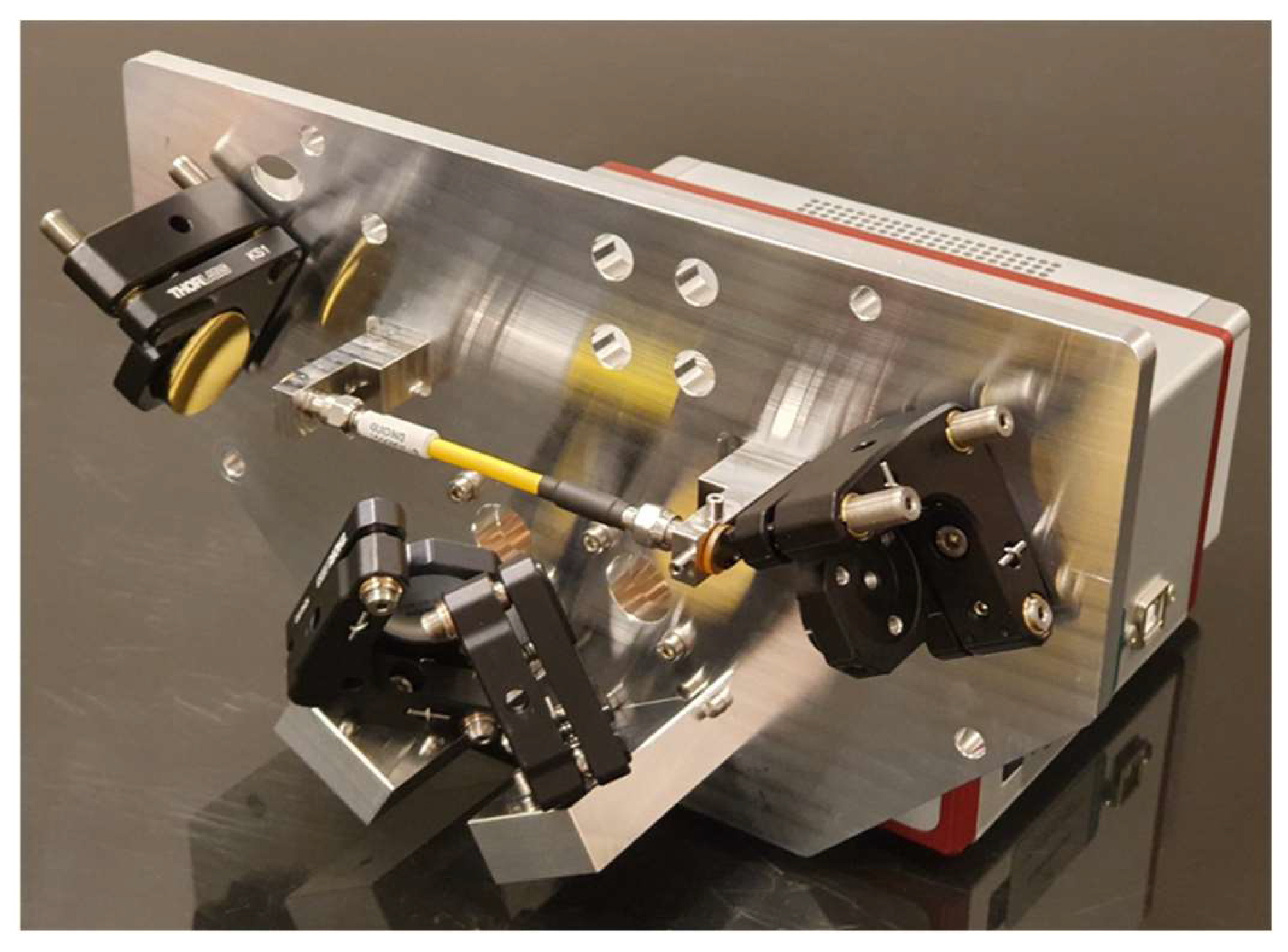

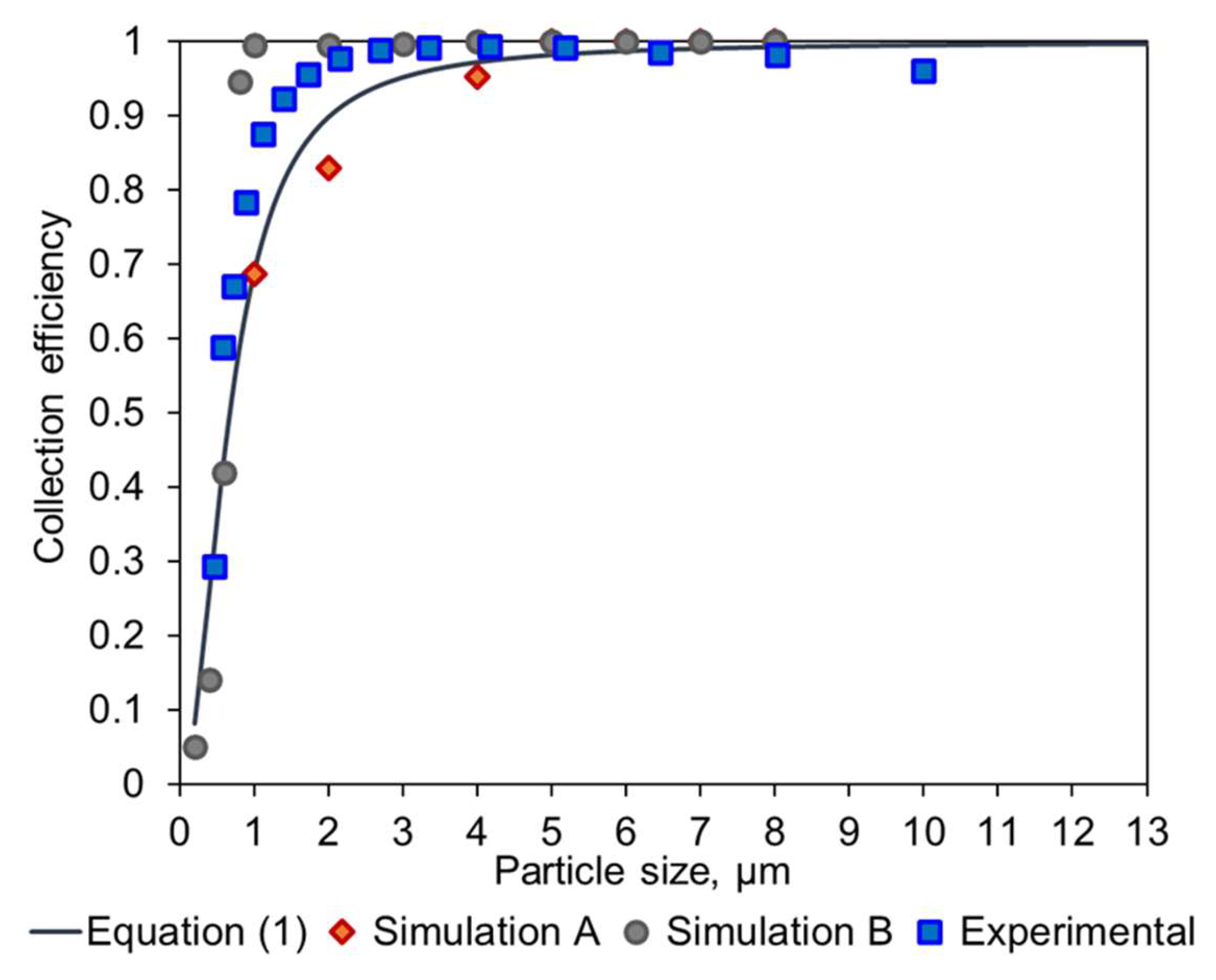


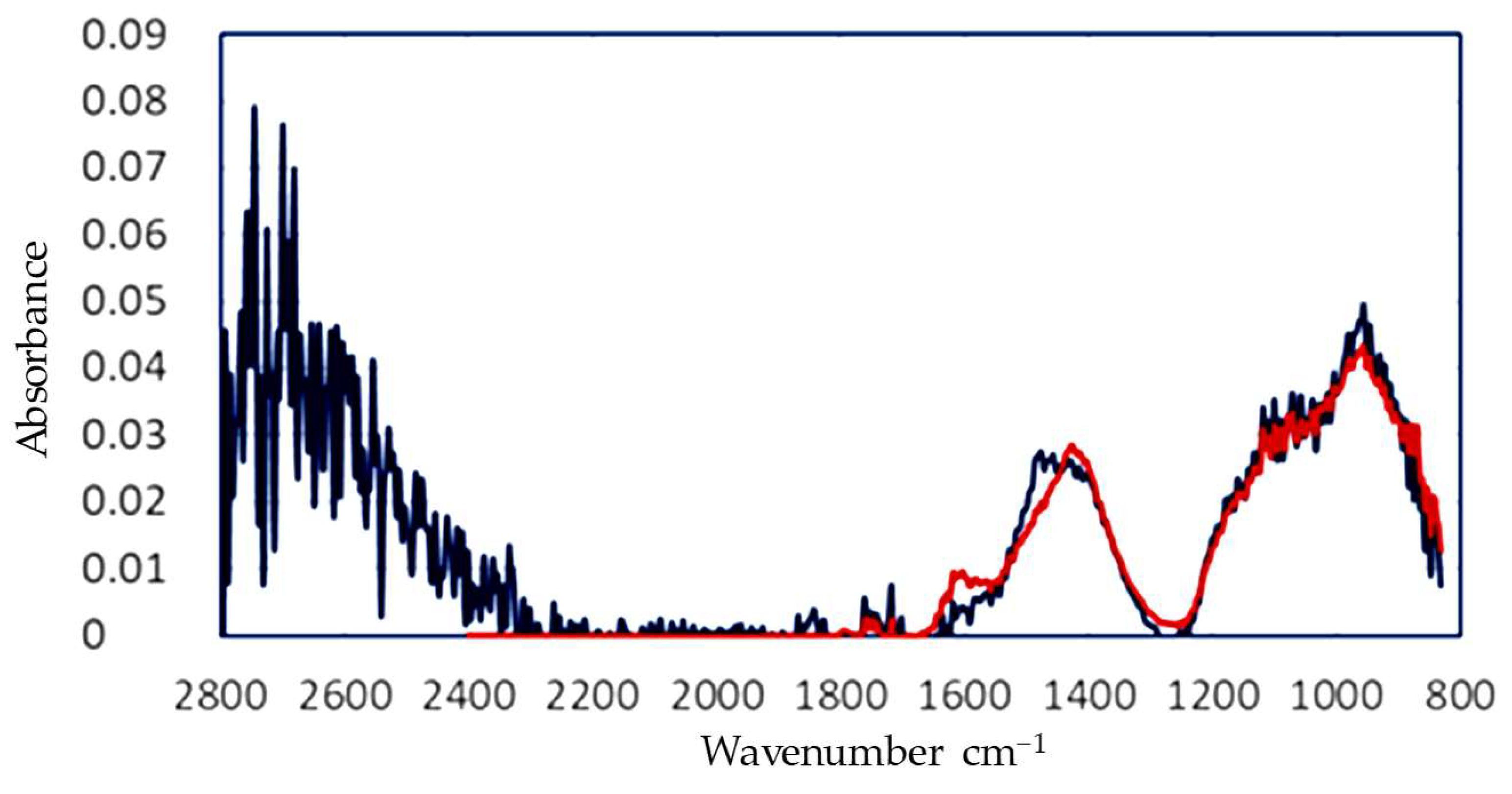
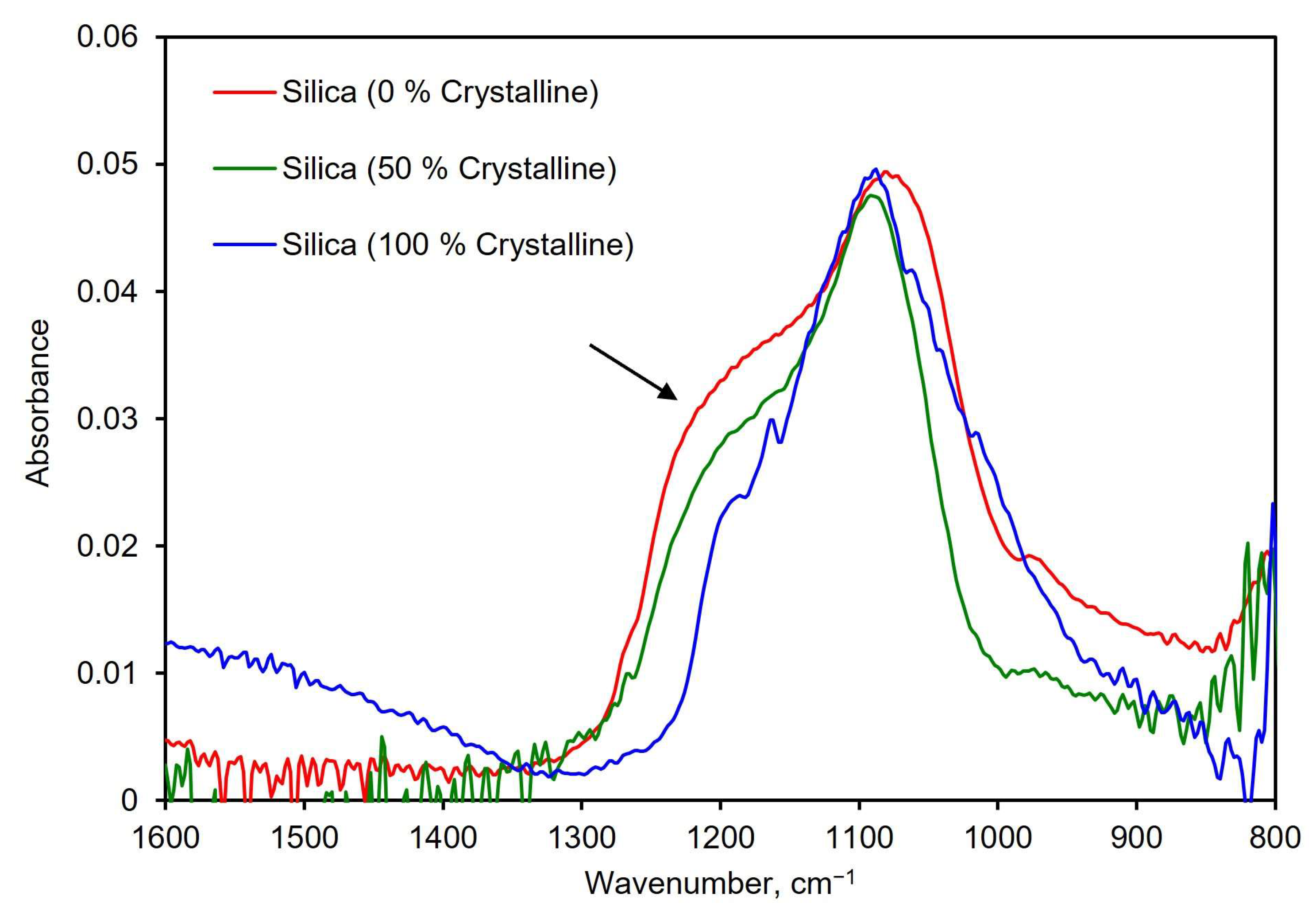
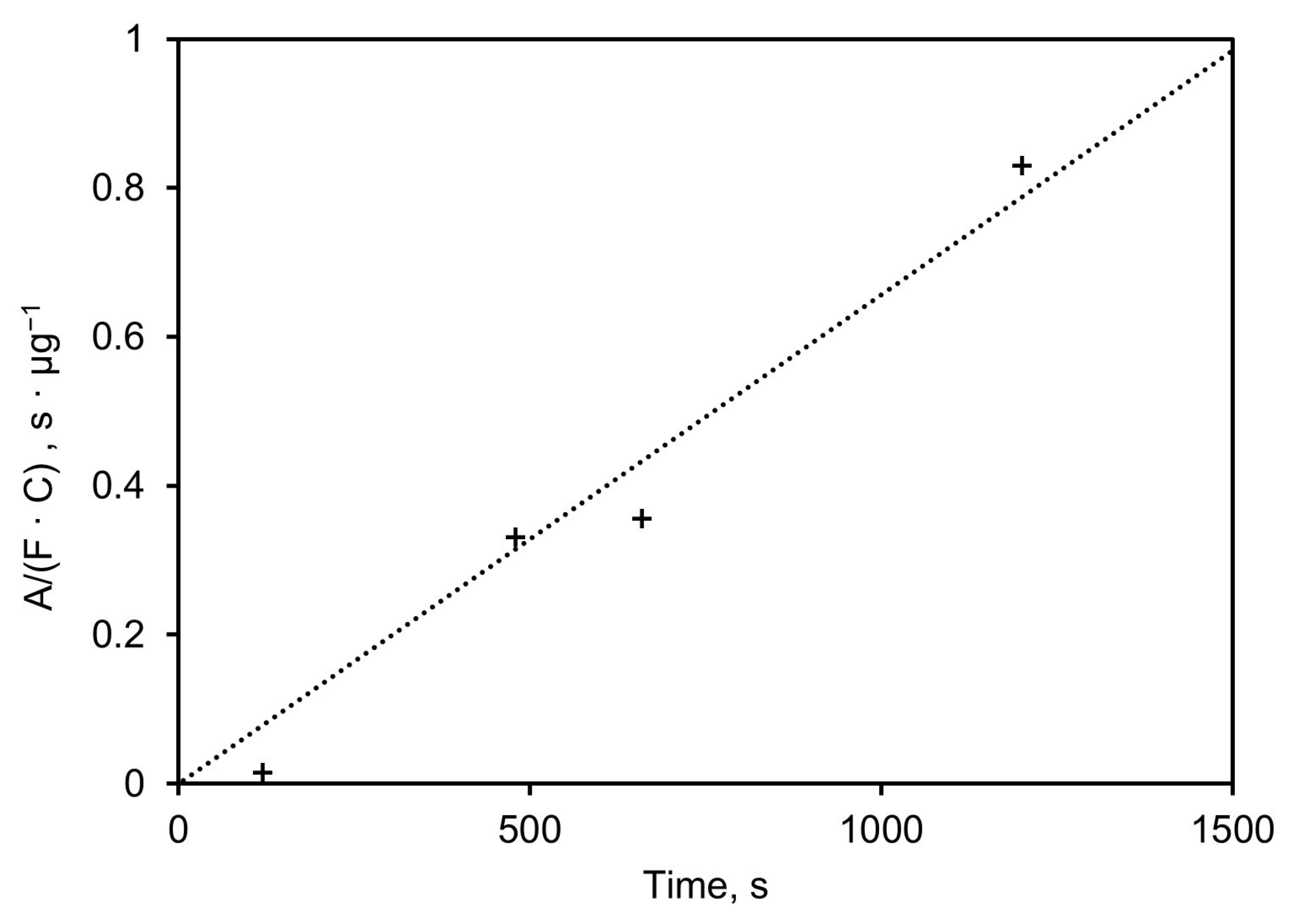
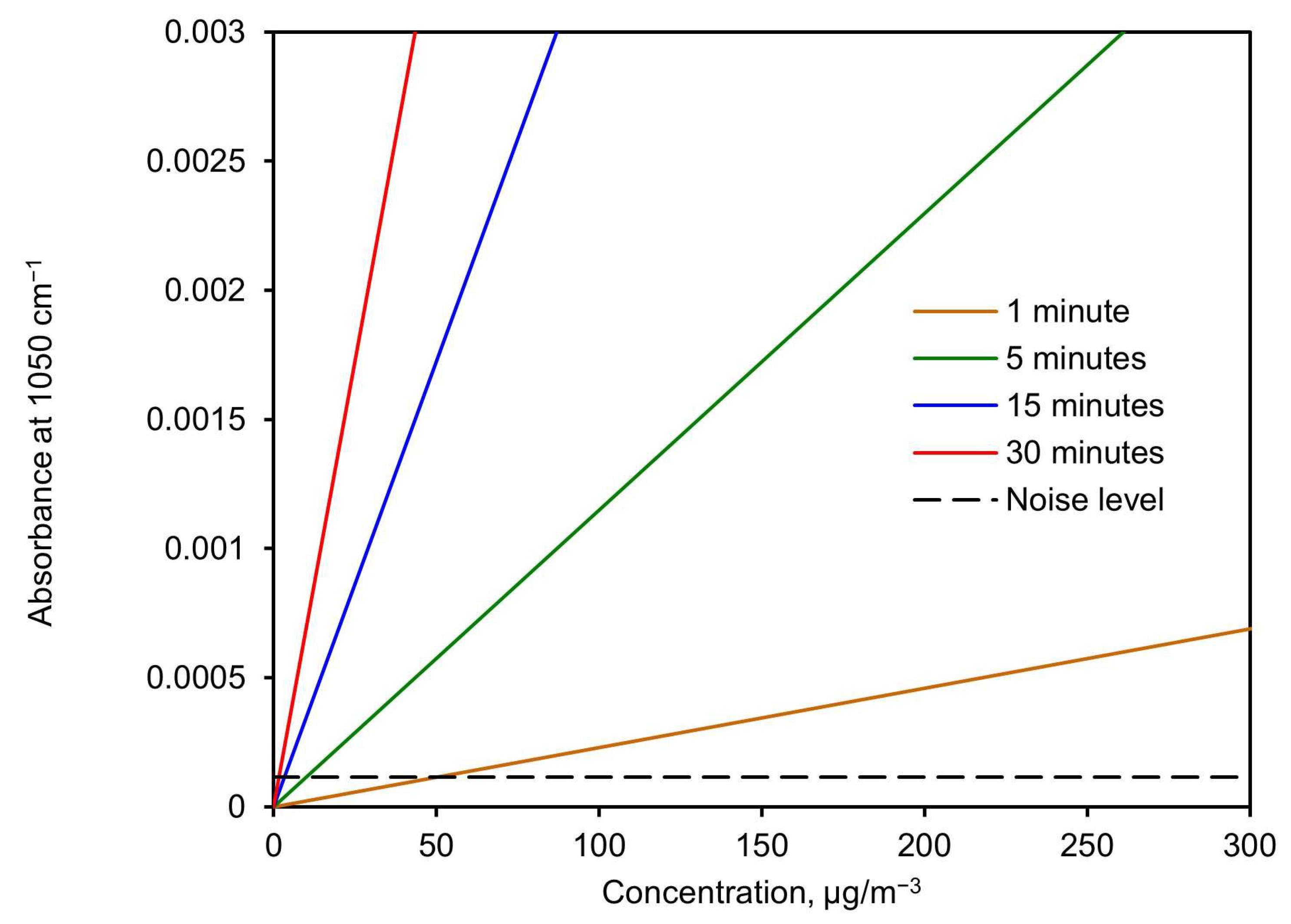




| Dc13 (Original) | Dc08 | Dc08-s | Dc05-s | ||
|---|---|---|---|---|---|
| Dc (mm) | 13.3 | 8 | 8 | 5 | 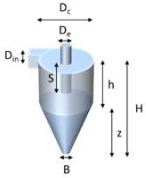 |
| Remarks | Other dimensions keep original scale | De, B are scaled accordingly. H, Z, S, Din keep original scale | De, B are scaled accordingly. H, Z, S, Din keep original scale |
| Cr-SiO2 | Am-SiO2 | CaCO3 | CaSO4 | Ca-Sil | Rest | |
|---|---|---|---|---|---|---|
| Sandstone | 75% | 4% | 6% | 0 | 13% | 2% |
| Concrete | 60% | 10% | 10% | 0 | 15% | 5% |
| Quartzite | 50% | 5% | 10% | 0 | 20% | 15% |
| Aerated concrete | 30% | 10% | 20% | 5% | 20% | 15% |
| Gypsum | 0 | 0 | 15% | 75% | 10% | 0 |
| Cr-SiO2 | 100% | 0 | 0 | 0 | 0 | 0 |
| Am-SiO2 | 0 | 95% | 0 | 0 | 0 | 5% |
| CaCO3 | 0 | 0 | 100% | 0 | 0 | 0 |
| CaSO4 | 0 | 0 | 0 | 100% | 0 | 0 |
| MIX1 | 51% | 49% | 0 | 0 | 0 | 0 |
| MIX2 | 30% | 22% | 0 | 30% | 10% | 8% |
| MIX3 | 76% | 24% | 0 | 0 | 0 | 0 |
| MIX4 | 40% | 18% | 12% | 30% | 0 | 0 |
| Feature | P1 | P2 | CF | P3-P7 |
|---|---|---|---|---|
| Diameter | 7.6 mm | |||
| Concentration | 11 mg/m3 | |||
| Water | High | |||
| Total silica | 64% | |||
| Crystalline silica | 39% | |||
| Amorphous silica | 0% | |||
| Calcium carbonate | 30% | |||
| Calcium sulfate | 1% | |||
| Calcium silicates | 22% | |||
| Rest | 8% |
| Parameter | Sandstone (exp.) | Sandstone (lit.) | Aerated Concrete (exp.) | Aerated Concrete (lit.) |
|---|---|---|---|---|
| Diameter | 6.6 µm | - | 7.6 µm | - |
| Concentration | 27 mg/m3 | - | 11 mg/m3 | - |
| Water | High | - | High | - |
| Total silica | 69% | 79% | 64% | 40% |
| C. silica | 67% | 75% | 39% | 30% |
| A. silica | 2% | 4% | 0% | 10% |
| Ca carbonate | 11% | 6% | 30% | 20% |
| Ca sulfate | 3% | 0% | 1% | 5% |
| Ca silicates | 11% | 13% | 22% | 20% |
| Rest | 4% | 2% | 8% | 15% |
Disclaimer/Publisher’s Note: The statements, opinions and data contained in all publications are solely those of the individual author(s) and contributor(s) and not of MDPI and/or the editor(s). MDPI and/or the editor(s) disclaim responsibility for any injury to people or property resulting from any ideas, methods, instructions or products referred to in the content. |
© 2024 by the authors. Licensee MDPI, Basel, Switzerland. This article is an open access article distributed under the terms and conditions of the Creative Commons Attribution (CC BY) license (https://creativecommons.org/licenses/by/4.0/).
Share and Cite
Núñez, J.; Boersma, A.; Koldeweij, R.; Trimboli, J. A Portable Infrared System for Identification of Particulate Matter. Sensors 2024, 24, 2288. https://doi.org/10.3390/s24072288
Núñez J, Boersma A, Koldeweij R, Trimboli J. A Portable Infrared System for Identification of Particulate Matter. Sensors. 2024; 24(7):2288. https://doi.org/10.3390/s24072288
Chicago/Turabian StyleNúñez, Javier, Arjen Boersma, Robin Koldeweij, and Joseph Trimboli. 2024. "A Portable Infrared System for Identification of Particulate Matter" Sensors 24, no. 7: 2288. https://doi.org/10.3390/s24072288





